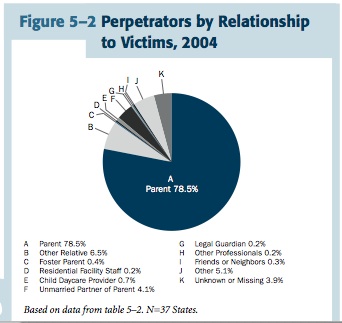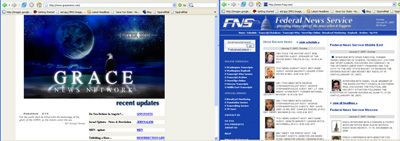Not Such a Good Head on His Shoulders
For another humorous political Photoshop story on Virtualpolitik, you can see who went to Disneyland unbeknownst to prospective voters.
Labels: photoshop
A blog about digital rhetoric that asks the burning questions about electronic bureaucracy and institutional subversion on the Internet.
Labels: photoshop
Labels: alternate reality games, talks, ubiquitous computing, UC Irvine, UCLA, urbanism
"Collective intelligence," perhaps best exemplified by the work of Pierre Lévy, who has been recently popularized by Henry Jenkins, has been central to much contemporary cybertheory. Nonetheless, Malcolm Gladwell has been questioning the wisdom of collective intelligence in recent years. In Blink, he shows how groups of
Labels: information literacy, terrorism
There was lots of controversy on the final day of the conference about the “Ethics of Computer Games.” Conference host Patrick Coppock pointed out that the virtualization of the war might be far more ethically troubling than Super Columbine Massacre RPG. Edward H. Spence revisited some of the territory of Julian Dibbell’s classic, “A Rape in Cyberspace" to argue that avatars, as representations of real, sentient beings, had a right to the dignity of personhood. Some in the audience questioned whether real world morality and its associated legal structure could really be transferred to spaces of fantasy. Next Rune Ottosen gave a journalistic perspective on how military videogames were skewing public perceptions of news events. Peter Rauch presented some of his comprehensive research on torture in videogames and proposed a serious game that would show its negative psychic and geopolitical consequences. Before my paper, the last one of the conference, Ren Reynolds offered a nuanced view of how communal norms function in MMO games. Reynolds blogs with Edward Castronova at the excellent Terra Nova and is also interesting from a Virtualpolitik standpoint because he has worked as a web designer for a number of government sites in the U.K.
Labels: conferences


Labels: conferences
In the rest of the day’s sessions on the theme of “computer game entities,” many of the interested philosophers present seemed to share Aarseth’s premise about the reality of game objects and were willing to defend their ontological status on a number of logical grounds. They were also interested in using game environments to test philosophical ideas and would prove to be eager to collaborate with game designers for that purpose.
Labels: conferences

Labels: global villages, personal life
Labels: blogging, Harvard, personal life
Labels: blogging

Labels: conferences
Labels: virtual worlds
Labels: powerpoint politics
Labels: blogging
Labels: game politics, Iraq war

Labels: human rights, youtube rhetoric

Labels: digital parenting
Labels: copyright









 Among the prose offerings for "joke" on the White House website there was this gem from Tom Ridge, former head of the Department of Homeland Security, which is ironic given recent legal challenges to humorous competitors on the grounds of intellectual property:
Among the prose offerings for "joke" on the White House website there was this gem from Tom Ridge, former head of the Department of Homeland Security, which is ironic given recent legal challenges to humorous competitors on the grounds of intellectual property:Labels: close reading, government websites, institutional rhetoric, search engines
Labels: youtube rhetoric

Labels: book reviews, copyright, France
Labels: wikis
Labels: copyright
Labels: digital parenting, Microsoft
 Iranian bloggers are being asked to register their sites with a central agency, but they aren't going quietly. You can see the home page of the Iranian government's site above. As one Iranian blogger has pointed out, however, the site has been subject to hackers and has had its web design originality questioned, given the existence of a look-alike Israeli site; best of all, the IP address of this solemn organ of state authority is actually located in Asbury Park, NJ.
Iranian bloggers are being asked to register their sites with a central agency, but they aren't going quietly. You can see the home page of the Iranian government's site above. As one Iranian blogger has pointed out, however, the site has been subject to hackers and has had its web design originality questioned, given the existence of a look-alike Israeli site; best of all, the IP address of this solemn organ of state authority is actually located in Asbury Park, NJ.Labels: blogging, global villages
Labels: distance learning, global villages, online communities

In the past few years, web watchers who follow political events directly from primary sources may have noticed that the Federal News Service and their claims of copyright have become more prominent in what you would normally think of as government records in the public domain, which are posted on the web or otherwise available electronically.
However, according to their copyright notices, you'd be wrong. Whether it is transcripts of Intelligence Committee Hearings or military briefings from Pentagon officials about Iraq, this service threatens those who disseminate public information about the workings of our democracy with dire consequences. Unfortunately they have a lock on certain government documents, many of which can't be gotten through other means, even from other commercial services like LexisNexis.
To give you the flavor of their legalism, here is the language posted at the bottom of a briefing to the press:
COPYRIGHT 2005, FEDERAL NEWS SERVICE, INC., 1000 VERMONT AVE. NW; 5TH FLOOR; WASHINGTON, DC - 20005, USA. ALL RIGHTS RESERVED. ANY REPRODUCTION, REDISTRIBUTION OR RETRANSMISSION IS EXPRESSLY PROHIBITED. UNAUTHORIZED REPRODUCTION, REDISTRIBUTION OR RETRANSMISSION CONSTITUTES A MISAPPROPRIATION UNDER APPLICABLE UNFAIR COMPETITION LAW, AND FEDERAL NEWS SERVICE, INC. RESERVES THE RIGHT TO PURSUE ALL REMEDIES AVAILABLE TO IT IN RESPECT TO SUCH MISAPPROPRIATION. FEDERAL NEWS SERVICE, INC. IS A PRIVATE FIRM AND IS NOT AFFILIATED WITH THE FEDERAL GOVERNMENT.
The news service, which was founded in 1984 during the Reagan era of privatization, is now run by president Cheryl A. Reagan (no relation to the Former commander in Chief), who is also the owner of the Grace News Network, along with Thorne G. Auchter, who has a Sourcewatch page of his own. Ms. Reagan has been described as a "fundamentalist Christian millionaire" who is proud to claim that the latter organization "will be reporting the current secular news, along with aggressive proclamations that will ‘change the news’ to reflect the Kingdom of God and its purposes.” Grace News Network was also strangely given a contract by the U.S. government for broadcasting Arabic language news in Muslim Iraq after the occupation. Reagan has also had well-documented bankruptcy woes, as this chronology reveals.
FNS has a terrible anti-trust history under its previous head Cortes W. Randell, a shady character who went on to run eModel, which garnered bad publicity for its fraudulent claims and financial troubles. In connection with an earlier venture, the National Student Marketing Corporation, Randell was featured in a New York Times "Rogue's Gallery." Almost unbelievably, I must point out that Randell took charge of the FNS and enjoyed the benefits of a government contract AFTER the Times described him as a "convicted stock swindler." Randell had been involved with FNS as late as 2002, although now he is apparently involved in a Washington-based Christian ministry that warns of "Nazi Islamic Fascism." As the Times admits, the scary thing is that the media has been depending on FNS coverage for decades despite all the stranger-than-fiction church-state, anti-trust, and financial mismanagement issues.
The incursions of this organization into the free culture of the public sphere urgently deserve attention from the copyfight community.
By the way, in that spirit, belated wishes to all for Happy Public Domain Day.
Labels: congressional legislation, copyright
Labels: afghanistan, government websites, Iraq war, White House
Labels: congressional legislation

Labels: elections

Labels: economics, global villages, India, participatory culture, personal life, social networking
Labels: government websites, Iraq war, remix culture
Labels: youtube rhetoric
 I think that making resolutions is like making wishes: it's best not to report them to others until they've actually come true. This picture actually shows my New Year's resolution from last year, which was to learn how to take advantage of the mobility of new input and display devices that allow highly portable recording and play functions so that I could generate more of my own content and wouldn't be tethered to my laptop when viewing and editing digital files. Considering that I've owned a personal computer since 1981 and have had e-mail since 1989, I've been a remarkable Luddite when it comes to other electronic communication apparatuses and media players.
I think that making resolutions is like making wishes: it's best not to report them to others until they've actually come true. This picture actually shows my New Year's resolution from last year, which was to learn how to take advantage of the mobility of new input and display devices that allow highly portable recording and play functions so that I could generate more of my own content and wouldn't be tethered to my laptop when viewing and editing digital files. Considering that I've owned a personal computer since 1981 and have had e-mail since 1989, I've been a remarkable Luddite when it comes to other electronic communication apparatuses and media players.Labels: Apple, ubiquitous computing